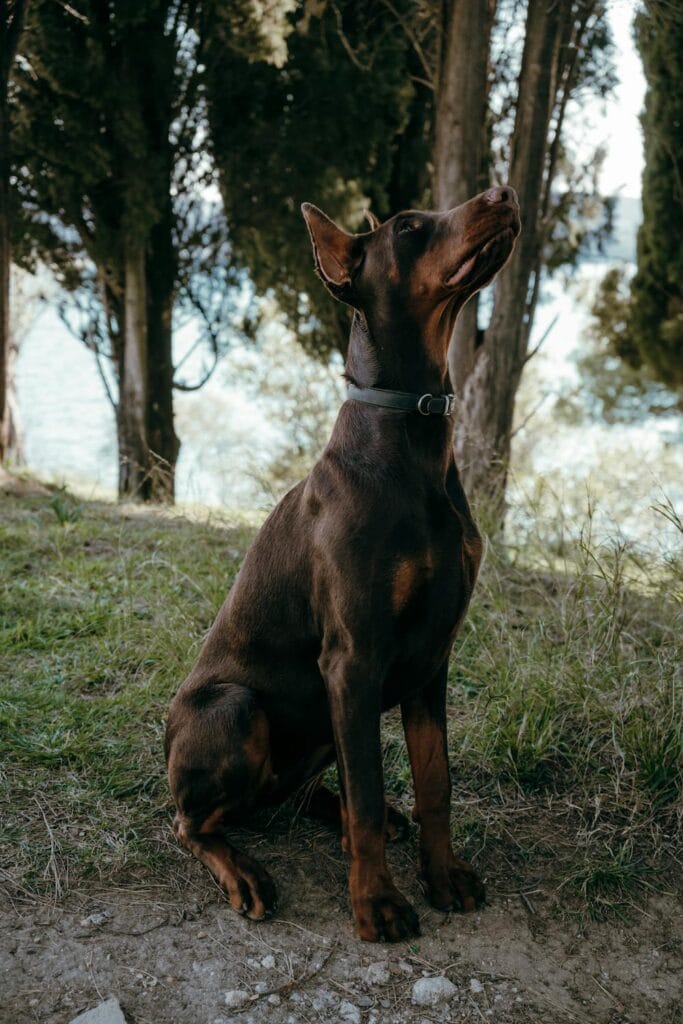- Introduction: The Gentle Nature of Pugs
- The Pug Breed: A Brief History 📜
- Do Pugs Bite? Debunking Myths and Exploring Facts 🤔
- Why Do Pugs Bite? Understanding the Triggers 🔍
- Do Pug Bites Hurt? Assessing the Impact 😬
- Pug Dog Bite Force: Comparing the Numbers 📊
- Is a Pug Dog Bite Dangerous? Assessing the Risks 🚨
- Do Pugs Bite Their Owners? Examining the Bond 💖
- Pug Bites Compared to Other Dog Breeds 🐕
- Preventing Pug Bites: A Comprehensive Approach 🛡️
- What to Do If Your Pug Bites 🚑
- The Psychology of Pug Behavior: Understanding Your Pet 🧠
- The Role of Genetics in Pug Behavior 🧬
- Pug Health Issues and Their Impact on Behavior 🏥
- Training Techniques to Prevent Pug Biting 🎓
- The Importance of Exercise for Pugs 🏃♂️
- Socialization: Setting Your Pug Up for Success 🌎
- The Legal Aspects of Dog Bites 📜
- Pug Bite Statistics: Putting It in Perspective 📊
- Myths and Misconceptions About Pug Biting 🙅♂️
- FAQs About Pug Bites 🙋♀️
- Conclusion: Understanding Your Pug for a Harmonious Relationship 🤝
Introduction: The Gentle Nature of Pugs
Pugs, with their wrinkly faces, bulging eyes, and curly tails, have captured the hearts of dog lovers worldwide. These charming little dogs are known for their playful personalities and affectionate nature. But like any breed, they come with their own set of behaviors and quirks. In this comprehensive guide, we’ll dive deep into the world of pugs, focusing on their biting behavior and much more.
The Pug Breed: A Brief History 📜
Before we delve into the specifics of pug biting, let’s take a moment to understand the breed’s origins:
- Pugs originated in China over 2,000 years ago
- They were bred as companion dogs for Chinese royalty
- Pugs made their way to Europe in the 16th century
- The breed was officially recognized by the American Kennel Club in 1885
This long history as companion animals has shaped the pug’s temperament, making them generally friendly and people-oriented.
Do Pugs Bite? Debunking Myths and Exploring Facts 🤔
One of the most common questions potential pug owners ask is, “Do pugs bite?” The short answer is: yes, pugs can bite, but it’s not a common behavior for the breed. Let’s break this down further:
Typical Pug Temperament
Pugs are generally known for being:
- Affectionate
- Playful
- Sociable
- Gentle
- Mischievous
These traits make pugs less likely to bite compared to some other breeds. However, it’s important to remember that every dog is an individual, and behavior can vary based on factors like upbringing, socialization, and individual personality.
Why Do Pugs Bite? Understanding the Triggers 🔍
While biting isn’t a typical pug behavior, there are circumstances that might lead a pug to bite. Understanding these triggers is crucial for prevention:
- Fear or Anxiety: Like any dog, a pug might bite if they feel threatened or scared.
- Pain or Discomfort: If your pug is hurting, they might lash out when touched.
- Territoriality: Pugs can be protective of their space or belongings.
- Playfulness: Sometimes, play can get too rough, leading to accidental nips.
- Lack of Socialization: Pugs not exposed to different people and situations may be more prone to fear-based biting.
- Resource Guarding: Some pugs may bite to protect food, toys, or other valued items.
- Maternal Instinct: Female pugs with puppies might become protective and bite to guard their young.
- Overstimulation: Too much excitement or sensory input can lead to nipping behavior.
- Redirected Aggression: A pug frustrated by something they can’t reach (like a dog outside the window) might redirect that frustration onto a nearby person.
- Medical Issues: Sometimes, underlying health problems can cause irritability and biting.
Understanding these triggers can help you create a safer environment for both you and your pug.
Do Pug Bites Hurt? Assessing the Impact 😬
The pain from a pug bite can vary depending on several factors:
- The force of the bite
- Where the bite occurs on your body
- Your individual pain tolerance
- The pug’s age and dental health
Generally, pug bites aren’t as severe as bites from larger breeds. Their small size and flat face mean they can’t exert as much force as some other dogs. However, any dog bite can be painful and potentially cause injury.
Pug Dog Bite Force: Comparing the Numbers 📊
Bite force is measured in pounds per square inch (PSI). Let’s look at how pugs stack up against other breeds:
| Breed | Average Bite Force (PSI) |
|---|---|
| Pug | 150-180 |
| Chihuahua | 100-180 |
| Labrador Retriever | 230-235 |
| German Shepherd | 238 |
| Rottweiler | 328 |
| Pit Bull | 235-330 |
| Kangal | 743 |
As you can see, pugs have a relatively low bite force compared to many other popular breeds. This doesn’t mean a pug bite can’t hurt, but it does mean the risk of serious injury is lower.
Is a Pug Dog Bite Dangerous? Assessing the Risks 🚨
While any dog bite can be concerning, pug bites are generally less dangerous than those from larger breeds. However, there are still risks to consider:
- Infection: Any break in the skin can lead to bacterial infection. Dog mouths contain bacteria that can cause issues if introduced to the bloodstream.
- Scarring: Though rare with pug bites, it’s possible, especially if the bite is deep or if proper wound care isn’t followed.
- Emotional Trauma: Especially for children, any dog bite can be scary and potentially lead to a fear of dogs.
- Rabies: While rare, especially in well-cared-for pets, rabies is always a concern with any animal bite.
- Tetanus: Another rare but potential risk from any puncture wound.
It’s important to clean and monitor any bite, no matter how small, and seek medical attention if you’re concerned.
Do Pugs Bite Their Owners? Examining the Bond 💖
Pugs are known for their strong attachment to their owners. They’re often described as “velcro dogs” because of how closely they stick to their humans. This close bond typically means pugs are less likely to bite their owners than strangers.
However, it’s not impossible. Factors that might lead a pug to bite their owner include:
- Sudden movements that startle the dog
- Accidentally hurting the pug (stepping on their paw, for example)
- Trying to take away a prized possession or treat
- Interrupting their sleep
- Touching sensitive areas (like paws or ears) without proper training
Pug Bites Compared to Other Dog Breeds 🐕
Let’s break down how pug bites compare to other popular breeds:
| Aspect | Pugs | Labrador Retrievers | Chihuahuas | German Shepherds |
|---|---|---|---|---|
| Bite Force | Low | Medium | Very Low | High |
| Frequency of Biting | Low | Low | Medium | Low |
| Potential for Serious Injury | Low | Medium | Low | High |
| Trainability to Prevent Biting | High | High | Medium | High |
As you can see, pugs generally fare well in this comparison, with a low bite force and a low frequency of biting incidents.
Preventing Pug Bites: A Comprehensive Approach 🛡️
Preventing bites is always better than dealing with the aftermath. Here’s a detailed approach to minimizing the risk of pug bites:
1. Early Socialization 🐾
Expose your pug to a variety of people, animals, and situations from a young age. This helps them become well-adjusted adults less likely to react with fear or aggression.
- Take your pug to puppy classes
- Invite friends and family over regularly
- Expose them to different sounds, sights, and textures
2. Consistent Training 🎓
Use positive reinforcement techniques to teach good behavior:
- Reward calm, non-reactive behavior
- Teach basic commands like “sit,” “stay,” and “leave it”
- Use treats and praise to encourage desired behaviors
3. Recognize Warning Signs 👀
Learn to read your pug’s body language:
- Growling or showing teeth
- Raised hackles
- Stiff body posture
- Whale eye (showing the whites of their eyes)
- Tucked tail or ears pinned back
4. Provide Mental Stimulation 🧠
Bored dogs are more likely to develop behavioral issues:
- Use puzzle toys for feeding
- Teach new tricks regularly
- Provide a variety of toys and rotate them
5. Respect Boundaries 🚫
Teach children and guests how to interact safely with your pug:
- No pulling on ears or tail
- Don’t disturb the dog while eating or sleeping
- Ask before petting
6. Regular Exercise 🏃♀️
A tired pug is a good pug. Ensure your pug gets enough physical activity:
- Daily walks (appropriate to their fitness level)
- Play sessions
- Swimming (if they enjoy it)
7. Health Check-ups 🩺
Regular vet visits can catch health issues that might cause irritability:
- Annual check-ups
- Dental care
- Prompt attention to any changes in behavior
8. Proper Handling 🤲
Learn how to handle your pug safely:
- Support their body when picking them up
- Avoid grabbing their face or head
- Be gentle when grooming
9. Manage the Environment 🏠
Create a safe space for your pug:
- Provide a quiet area they can retreat to
- Use baby gates to create dog-free zones if needed
- Remove items that might cause resource guarding
10. Professional Help 🆘
Don’t hesitate to seek help from a professional dog trainer or behaviorist if you notice concerning behaviors.
What to Do If Your Pug Bites 🚑
Despite our best efforts, bites can sometimes occur. If your pug does bite:
- Separate the pug from the person bitten
- Clean the wound thoroughly with soap and water
- Apply an antibiotic ointment and cover with a sterile bandage
- Seek medical attention if the bite is severe or shows signs of infection
- Report the bite to local authorities if required by law
- Assess what led to the bite and consult with a professional trainer or behaviorist
Remember, addressing the issue promptly can prevent future incidents.
The Psychology of Pug Behavior: Understanding Your Pet 🧠
To truly prevent biting, it’s crucial to understand the psychology behind pug behavior:
Pack Mentality
Pugs, like all dogs, are descendants of wolves and retain some pack instincts:
- They may try to establish dominance
- They respond well to clear leadership from their owners
- They thrive on routine and structure
Emotional Sensitivity
Pugs are known for being emotionally attuned to their owners:
- They can pick up on human emotions
- Stress in the household can affect their behavior
- Positive reinforcement works well due to their desire to please
Stubbornness
Pugs have a reputation for being stubborn:
- This can make training challenging at times
- Consistency and patience are key
- Finding the right motivators (treats, praise) is crucial
Understanding these aspects of pug psychology can help you better communicate with your pet and prevent unwanted behaviors like biting.
The Role of Genetics in Pug Behavior 🧬
While environment and training play significant roles in a pug’s behavior, genetics also have an impact:
- Pugs were bred as companion animals, predisposing them to be friendly
- Some behavioral traits can be inherited
- Responsible breeding practices can help minimize aggressive tendencies
It’s important to choose a reputable breeder or consider adoption from a rescue that can provide information about the dog’s temperament.
Pug Health Issues and Their Impact on Behavior 🏥
Pugs are prone to certain health issues that can affect their behavior and potentially lead to biting:
- Brachycephalic Airway Syndrome: Their flat faces can cause breathing difficulties, leading to stress and irritability.
- Eye Problems: Pugs are prone to eye issues, which can cause discomfort and defensive behavior if touched near the eyes.
- Skin Fold Dermatitis: The wrinkles that make pugs so adorable can also harbor infections, causing discomfort.
- Hip Dysplasia: This painful condition can make a pug more likely to bite if their hips are touched.
- Dental Issues: Tooth pain can lead to irritability and biting.
Regular vet check-ups and addressing health issues promptly can help prevent behavior problems related to discomfort or pain.
Training Techniques to Prevent Pug Biting 🎓
Let’s delve deeper into some specific training techniques to prevent biting:
Bite Inhibition Training
This involves teaching your pug to control the force of their bite:
- Allow gentle mouthing during play
- If the bite becomes too hard, yelp loudly and stop play
- Resume play when the pug is calm
- Gradually decrease the pressure you’ll tolerate
Desensitization
This technique helps your pug become comfortable with handling:
- Start by touching areas your pug is comfortable with
- Gradually move to more sensitive areas (paws, ears)
- Pair touching with treats and praise
- Stop if your pug shows signs of discomfort and try again later
Impulse Control Exercises
These help your pug learn to control their reactions:
- “Leave it” command: Teach your pug to ignore tempting items
- “Wait” before meals: Have your pug wait calmly before eating
- “Stay” with distractions: Practice staying still even with excitement around
The Importance of Exercise for Pugs 🏃♂️
While pugs aren’t high-energy dogs, they still need regular exercise to maintain good behavior:
- Aim for 30 minutes of activity daily
- Break exercise into shorter sessions if needed
- Include both physical and mental stimulation
Proper exercise can help prevent boredom-related behaviors and keep your pug mentally balanced.
Socialization: Setting Your Pug Up for Success 🌎
Proper socialization is crucial in preventing fear-based biting. Here’s how to socialize your pug effectively:
- Start early: The critical socialization period is between 3-16 weeks
- Expose them to various people: Different ages, genders, races
- Introduce different animals: Both other dogs and other species
- Experience different environments: Parks, streets, stores (where allowed)
- Encounter various sounds: Traffic, appliances, music
- Feel different textures: Grass, concrete, carpet, sand
Remember to keep all experiences positive and never force your pug into a situation they’re uncomfortable with.
The Legal Aspects of Dog Bites 📜
It’s important to understand the potential legal ramifications of a dog bite:
- Laws vary by location, but owners are generally responsible for their dog’s behavior
- Some areas have “one bite” rules, while others hold owners strictly liable
- Breed-specific legislation may affect pugs in some areas
Being aware of your local laws can help you take appropriate precautions and understand your responsibilities as a pug owner.
Pug Bite Statistics: Putting It in Perspective 📊
While specific statistics on pug bites are limited, we can look at some general dog bite data:
- Small dogs (under 20 pounds) account for about 30% of all reported dog bites
- Children are the most common victims of dog bites
- Most dog bites occur in the home and involve familiar dogs
Remember, these statistics cover all dogs, not just pugs. Pugs are generally considered to be on the lower end of the biting spectrum.
Myths and Misconceptions About Pug Biting 🙅♂️
Let’s debunk some common myths about pugs and biting:
- Myth: Pugs never bite.
Fact: While less common, pugs can bite if provoked or scared. - Myth: A pug’s bite can’t cause any harm.
Fact: While less severe than larger breeds, a pug bite can still cause injury. - Myth: Pugs who bite once will always be aggressive.
Fact: Many factors contribute to biting, and with proper training, most pugs can overcome this behavior. - Myth: Only male pugs bite.
Fact: Both male and female pugs can bite, though unaltered males may be more prone to aggressive behaviors. - Myth: Punishing a pug will stop them from biting.
Fact: Punishment can increase fear and anxiety, potentially making biting more likely.
FAQs About Pug Bites 🙋♀️
Q: Are pugs more likely to bite than other breeds?
A: No, pugs are generally considered less likely to bite compared to many other breeds due to their friendly nature.
Q: Can pug bites cause serious injury?
A: While possible, serious injuries from pug bites are rare due to their small size and relatively weak bite force. However, any dog bite should be taken seriously.
Q: How can I tell if my pug is about to bite?
A: Watch for signs like growling, showing teeth, raised hackles, or a stiff body posture. Learning to read your pug’s body language is key.
Q: Is it safe to have a pug around children?
A: Pugs can be great with children, but supervision and teaching proper interaction are crucial.
Q: Can pug bites spread diseases?
A: Like any dog bite, pug bites can potentially spread bacteria. Always clean any bite thoroughly.
Conclusion: Understanding Your Pug for a Harmonious Relationship 🤝
While pugs can bite, it’s relatively rare and usually less severe than bites from larger breeds. By understanding your pug’s needs, respecting their boundaries, and providing proper training and socialization, you can minimize the risk of bites and enjoy a wonderful relationship with your wrinkly friend.
Remember, every dog is an individual. If you’re concerned about your pug’s behavior, don’t hesitate to consult with a professional trainer or your veterinarian. With the right approach, you and your pug can enjoy many happy, bite-free years together! 🐾💕































